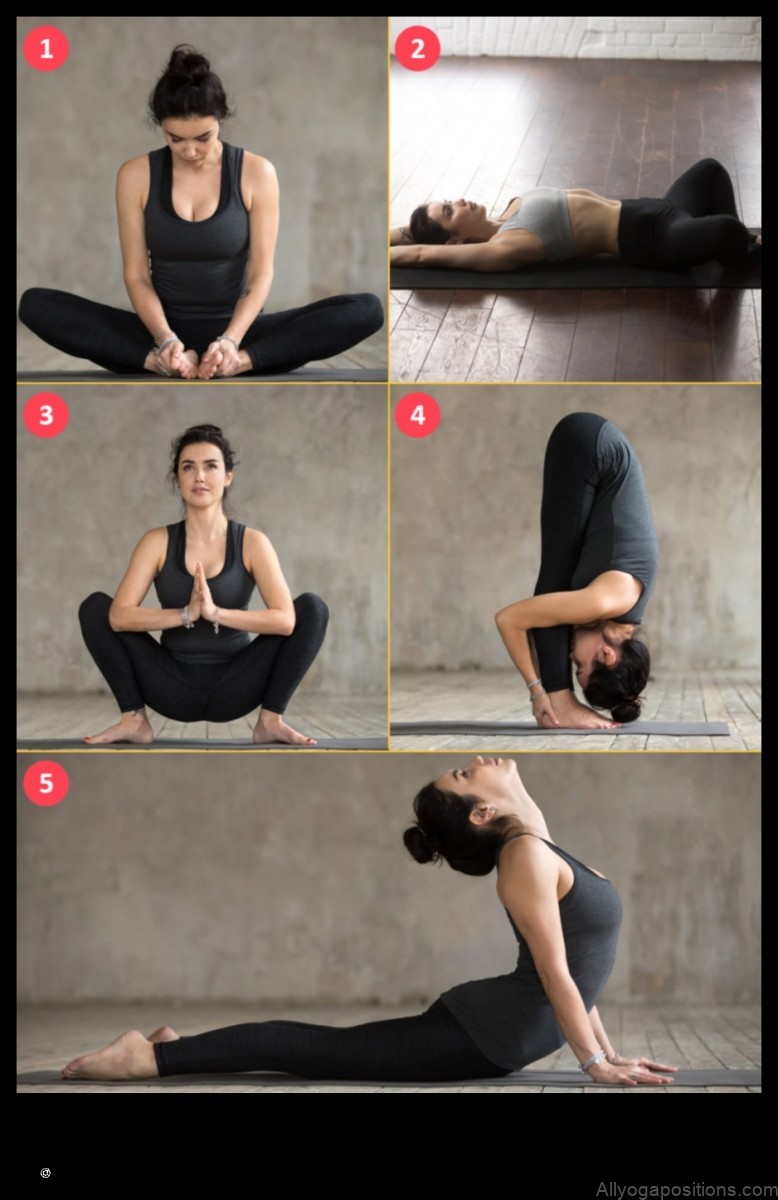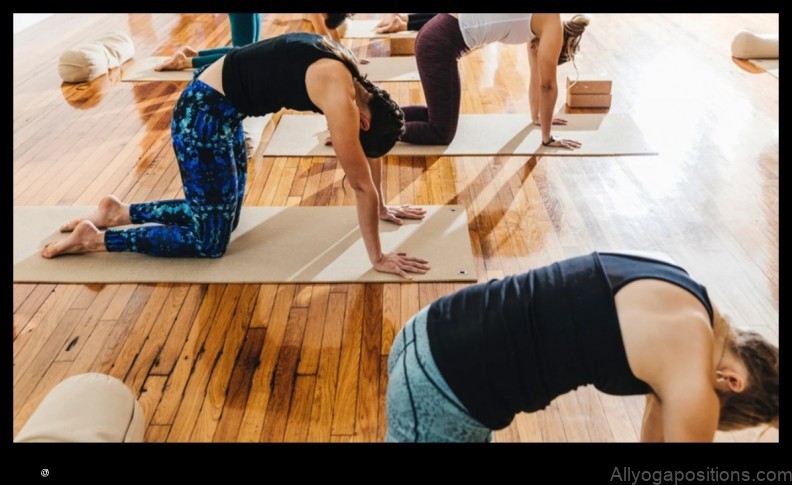
Yoga for Menopause: Easing Symptoms
Menopause is a natural transition in a woman’s life that occurs when her ovaries stop producing estrogen. This can lead to a variety of symptoms, including hot flashes, night sweats, mood swings, vaginal dryness, and weight gain. Yoga can be a helpful way to ease these symptoms and improve overall well-being.
There are many benefits of yoga for menopause, including:
- Reduces hot flashes and night sweats
- Improves mood and sleep
- Reduces stress
- Increases flexibility and strength
- Improves balance
- Reduces pain
- Improves overall well-being
There are many different types of yoga that can be helpful for menopause, including hatha yoga, vinyasa yoga, and yin yoga. It is important to find a type of yoga that you enjoy and that is appropriate for your fitness level.
If you are new to yoga, it is a good idea to start with a beginner class. You can also find many helpful resources online, including books, DVDs, and online classes.
Yoga is a safe and effective way to ease the symptoms of menopause and improve overall well-being. If you are considering adding yoga to your wellness routine, talk to your doctor first.

Types of Yoga for Menopause
There are many different types of yoga that can be helpful for menopause. Some of the most popular types include:
- Hatha yoga
- Vinyasa yoga
- Yin yoga
- Restorative yoga
- Kundalini yoga
Each type of yoga has its own unique benefits. Hatha yoga is a good choice for beginners, as it focuses on slow, gentle movements. Vinyasa yoga is a more challenging type of yoga that involves flowing from one pose to the next. Yin yoga is a relaxing type of yoga that focuses on holding poses for long periods of time. Restorative yoga is a gentle type of yoga that is designed to promote relaxation and healing. Kundalini yoga is a type of yoga that is said to awaken the kundalini energy, which is believed to be located at the base of the spine.
It is important to find a type of yoga that you enjoy and that is appropriate for your fitness level. If you are new to yoga, it is a good idea to start with a beginner class. You can also find many helpful resources online, including books, DVDs, and online classes.
How to Start Yoga for Menopause
If you are new to yoga, it is a good idea to start with a beginner class. You can find beginner yoga classes at most gyms, yoga studios, and community centers.
When you are choosing a class, it is important to find a teacher who is experienced in teaching yoga for menopause. You should also make sure that the class is appropriate for your fitness level.
If you are unable to find a beginner yoga class, you can also start by practicing yoga at home. There are many helpful resources available online, including books, DVDs, and online classes.
When you are practicing yoga at home, it is important to start slowly and gradually increase the intensity of your practice as you get stronger.
Here are some tips for starting yoga for menopause:
- Start slowly and gradually increase the intensity of your practice as you get stronger.
- Listen to your body and stop if you feel pain.
- Hydrate before and after your practice.
- Warm up before your practice and cool down afterwards.
- Practice yoga in a comfortable environment.

Yoga Poses for Menopause
There are many different yoga poses that can be helpful for menopause. Some of the most beneficial poses include:
- Child’s pose
- Downward-facing dog
- Bridge pose
- Seated forward bend
Menopause Yoga Symptoms Hot flashes, night sweats, mood swings, vaginal dryness, sleep problems, weight gain, decreased sex drive Relief Yoga can help to relieve menopause symptoms by reducing stress, improving circulation, and increasing flexibility Exercise Yoga is a low-impact exercise that is safe for people of all ages and fitness levels II. Benefits of Yoga for Menopause
Yoga has been shown to have a number of benefits for women going through menopause, including:
- Reduced hot flashes
- Improved sleep
- Reduced stress
- Increased flexibility
- Improved balance
- Increased strength
- Improved mood
Yoga can also help to improve overall well-being and quality of life for women going through menopause.
III. Types of Yoga for Menopause
There are many different types of yoga that can be helpful for menopause. Some of the most popular types of yoga for menopause include:
- Hatha yoga
- Vinyasa yoga
- Yin yoga
- Yoga nidra
- Kundalini yoga
Each type of yoga has its own unique benefits, and the best type of yoga for you will depend on your individual needs and preferences.
If you are new to yoga, it is a good idea to start with a gentle type of yoga, such as Hatha or Yin yoga. This will help you to ease into the practice and gradually build up your strength and flexibility.
As you become more experienced with yoga, you may want to try a more challenging type of yoga, such as Vinyasa or Kundalini yoga. This can help you to burn calories, improve your cardiovascular health, and increase your energy levels.
It is important to find a type of yoga that you enjoy and that you can stick with on a regular basis. This will help you to reap the maximum benefits of yoga for menopause.
IV. How to Start Yoga for Menopause
Yoga can be a great way to ease the symptoms of menopause, but it’s important to start slowly and gradually increase the intensity of your practice as you get stronger.
Here are a few tips for getting started with yoga for menopause:
- Choose a beginner-friendly yoga class or program.
- Listen to your body and don’t push yourself too hard.
- Start with short sessions and gradually increase the length of your practice as you get more comfortable.
- Make sure to warm up before your practice and cool down afterwards.
- Stay hydrated by drinking plenty of water before, during, and after your practice.
- Practice yoga in a comfortable environment where you can relax and focus on your breath.
If you have any concerns about starting a yoga practice, be sure to talk to your doctor before you begin.
V. Yoga Poses for Menopause
There are many different yoga poses that can be helpful for easing the symptoms of menopause. Some of the most common poses include:
- Cat/cow pose
- Downward-facing dog pose
- Seated forward bend pose
- Pigeon pose
- Bridge pose
- Savasana (Corpse pose)
These poses can help to relieve stress, improve flexibility, and reduce pain. They can also help to improve circulation and promote relaxation.
If you are new to yoga, it is important to start slowly and gradually increase the intensity of your practice as you become more comfortable. It is also important to listen to your body and avoid any poses that cause pain.
Yoga can be a very effective way to ease the symptoms of menopause. If you are interested in trying yoga, it is a good idea to find a qualified instructor who can help you develop a safe and effective practice.
6. FAQ
Here are some frequently asked questions about yoga for menopause:
- What are the benefits of yoga for menopause?
- What types of yoga are best for menopause?
- How can I start yoga for menopause?
- What are some yoga poses for menopause?
- What are some yoga breathing exercises for menopause?
- What are some yoga meditation practices for menopause?
- What are some yoga diet tips for menopause?
- What are some yoga supplements for menopause?
For more information on yoga for menopause, please see our yoga for menopause resource page.
VII. Yoga Meditation for Menopause
Yoga meditation is a type of meditation that is practiced in conjunction with yoga poses. It is designed to help you relax and focus your mind, and it can be a helpful way to ease the symptoms of menopause.
There are many different ways to practice yoga meditation, but one simple method is to sit in a comfortable position and focus on your breath. As you inhale, say to yourself, “I am breathing in.” As you exhale, say to yourself, “I am breathing out.” Continue to do this for a few minutes, or for as long as you like.
You can also practice yoga meditation by focusing on a mantra. A mantra is a word or phrase that you repeat over and over again. When you focus on a mantra, it can help to quiet your mind and bring you into a state of meditation.
Yoga meditation can be a helpful way to ease the symptoms of menopause, such as hot flashes, night sweats, and mood swings. It can also help you to relax and improve your overall well-being.
Yoga Diet for Menopause
VIII. Yoga Diet for Menopause
Yoga can be a helpful addition to a healthy diet for menopause. The following are some tips for eating a healthy diet during menopause:
- Eat plenty of fruits and vegetables. Fruits and vegetables are packed with vitamins, minerals, and fiber, all of which are important for maintaining a healthy body during menopause.
- Choose whole grains over refined grains. Whole grains are a good source of fiber, which can help to keep you feeling full and satisfied.
- Limit your intake of processed foods. Processed foods are often high in unhealthy fats, sugar, and salt, all of which can contribute to weight gain and other health problems.
- Drink plenty of water. Staying hydrated is important for overall health, and it can also help to relieve some of the symptoms of menopause, such as hot flashes and night sweats.
- Limit your intake of alcohol and caffeine. Alcohol and caffeine can both worsen the symptoms of menopause.
If you are concerned about your diet during menopause, talk to your doctor or a registered dietitian. They can help you create a healthy eating plan that is right for you.
IX. Yoga Supplements for Menopause
There are a number of different yoga supplements that can be helpful for easing the symptoms of menopause. These supplements are typically made from natural ingredients and can be taken in pill or powder form. Some of the most common yoga supplements for menopause include:
- Ashwagandha: This herb has been shown to help reduce hot flashes, night sweats, and anxiety.
- Ginseng: This herb has been shown to improve mood and energy levels.
- Rhodiola rosea: This herb has been shown to help reduce fatigue and improve cognitive function.
- Turmeric: This spice has been shown to have anti-inflammatory properties that can help relieve pain and inflammation.
It is important to talk to your doctor before taking any yoga supplements, as some of them may interact with other medications you are taking.
FAQ
Q1: What are the benefits of yoga for menopause?
A1: Yoga can help to ease many of the symptoms of menopause, including hot flashes, night sweats, mood swings, and fatigue. It can also help to improve sleep, reduce stress, and increase flexibility and strength.
Q2: What types of yoga are good for menopause?
A2: There are many different types of yoga that can be helpful for menopause, including gentle yoga, hatha yoga, and restorative yoga. It is important to choose a type of yoga that is comfortable for you and that you enjoy.
Q3: How can I start yoga for menopause?
A3: The best way to start yoga for menopause is to find a class that is specifically designed for women in menopause. You can also find many resources online to help you get started with yoga at home.Table of Contents
Maybe You Like Them Too
